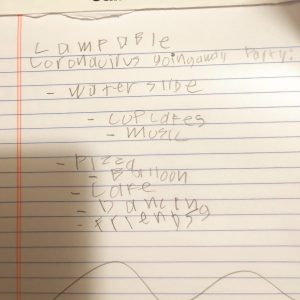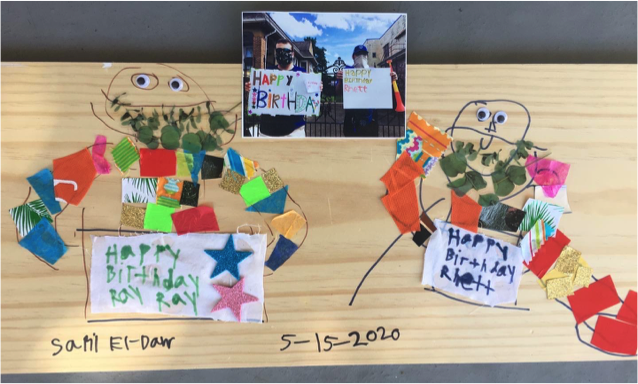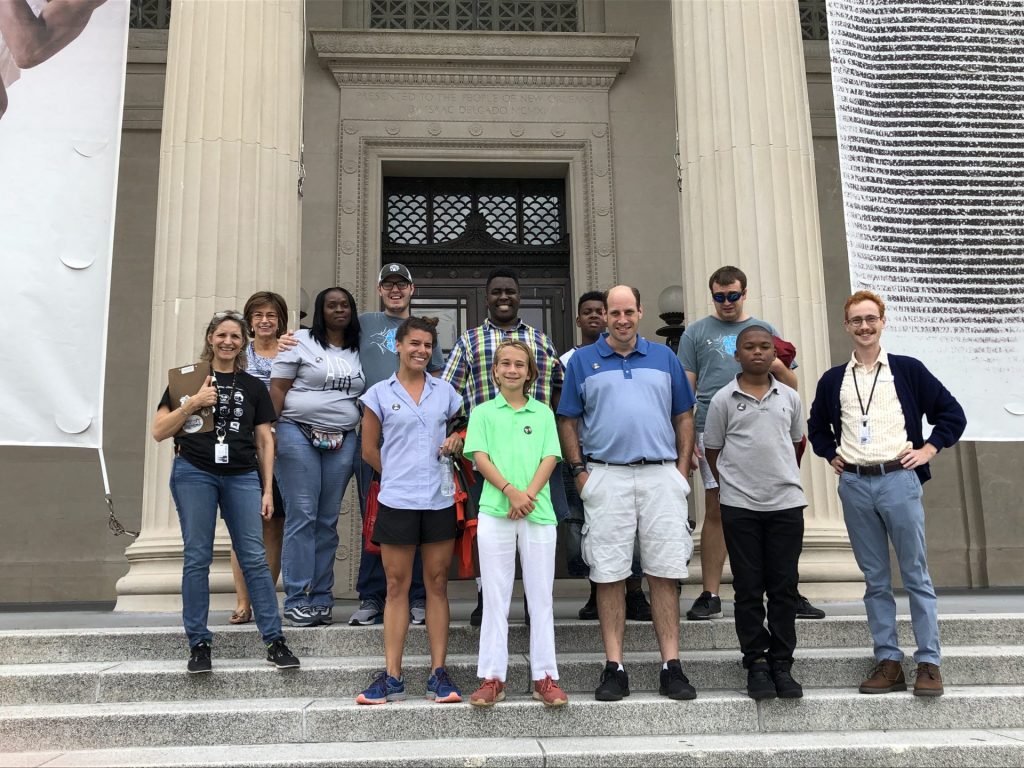“It’ll be about Batman,” said Joel Casteneda, a Camp Able youth group member, when asked about a recent project in partnership with the New Orleans Museum of Art. The project may not be about a caped crusader, but it is about special abilities, identity and visibility.
In the summer of 2019, a partnership began between the New Orleans Museum of Art and Camp Able, a ministry of St. Andrew’s Episcopal Church that is dedicated to the development, execution, and growth of dignity-driven programs for the benefit of those with developmental disabilities, their families, and the individuals who choose to serve them. Participants worked with Taylor Cheek, Director of Camp Able NOLA, and two staffers from NOMA’s Learning and Engagement Department: Tracy Kennan, Curator of Education, and Connor Kilian, Learning and Engagement Assistant. Together they practiced skills pertaining to language and creative expression over a series of visits to the galleries and the Besthoff Sculpture Garden.
Camp Able’s most recent in-person visit to the museum was on March 8 to see Tina Freeman: Lamentations, which lent itself to an exercise on comparing and contrasting skills. In this exhibition, Freeman juxtaposes photographs of Louisiana wetlands with scenes from the Arctic and Antarctic zones. Just over week later, on March 16, NOMA, like many other institutions and businesses across the city, temporarily closed its doors to help prevent the spread of COVID-19.
In those early days of the shutdown, Taylor was dismayed by the scarcity of neurodiverse perspectives in the public discourse around the pandemic: “Their perspectives should be included when you read the news,” she said. That sentiment inspired the recent project to document the experiences of the Camp Able youth group during the pandemic through writing and visual art.
Learning and Engagement staff kept in contact with Camp Able to offer support and digital resources as the group adapted to virtual meetings. Taylor felt that NOMA would be a terrific partner for this project. “The rapport that Tracy and Connor had already developed with our youth group through our partnership made this a very good avenue for us. They are our NOMA friends who like to interact with us and that is a big deal!”
Continuity and familiarity, comforting under any circumstances, were especially important to maintain at a time when so much of the world seemed ruled by uncertainty. In order to make a connection to the group’s last trip to NOMA, it was decided to revisit the landscape photography of Tina Freeman virtually. Participants practiced using observation and description skills to discuss the landscapes they were viewing with all five of their senses. The group then used the same process to explore their experiences under Louisiana’s then stay-at-home order, and the responses from both exercises were compiled into collaborative poems.
In subsequent meetings, NOMA staff facilitated art-making activities like collage self-portraits and virtual collaborative drawings on the topics of home and health. They also engaged with the Camp Able youth group in a presentation on the artist Clementine Hunter and a discussion on what it means to be a self-taught artist depicting everyday life.
“It is always joyful and often surprising to hold open conversations about art with Camp Able,” said Kennan. “I was a bit nervous that the move to online looking might dampen participation, but other than typical Zoom meeting issues, that was not the case at all and we were able to complete our planned discussions and activities from home!”
The youth group was also hard at work documenting their experiences outside of these sessions. “It’s the first time I’ve ever documented one of my experiences for a larger audience,” wrote Sami El-Dahr. “I’m happy. Fun. I think it’s great. I made a collage.” Several participated in a drive-by birthday celebration which inspired El-Dahr to make his collage. Others created a list of friends that they missed and wrote a song about a Camp Able reunion.
The project continued into the early phases of New Orleans’ reopening plan. The documents that the group created have been compiled into a digital booklet. “Maybe a few of these kids will be noticed for the interesting things they have to add,” said Stephen Richardson, parent of a youth group member. “How cool that the public eye will have the opportunity to learn about their ideas because of this documentation of the quarantine.” The original document has been submitted for acquisition to the Historic New Orleans Collection
At the center of this project is the idea that we all need to do the work to ensure that voices from every community are heard not only in times of crises, but always. That work will continue. but this article will end with the voice of Jared Richardson, Camp Able youth group member:
“We will see each other again if the coronavirus goes away,” said youth group member Jared Richardson. “Y’all be good out there. Y’all stay home!”



